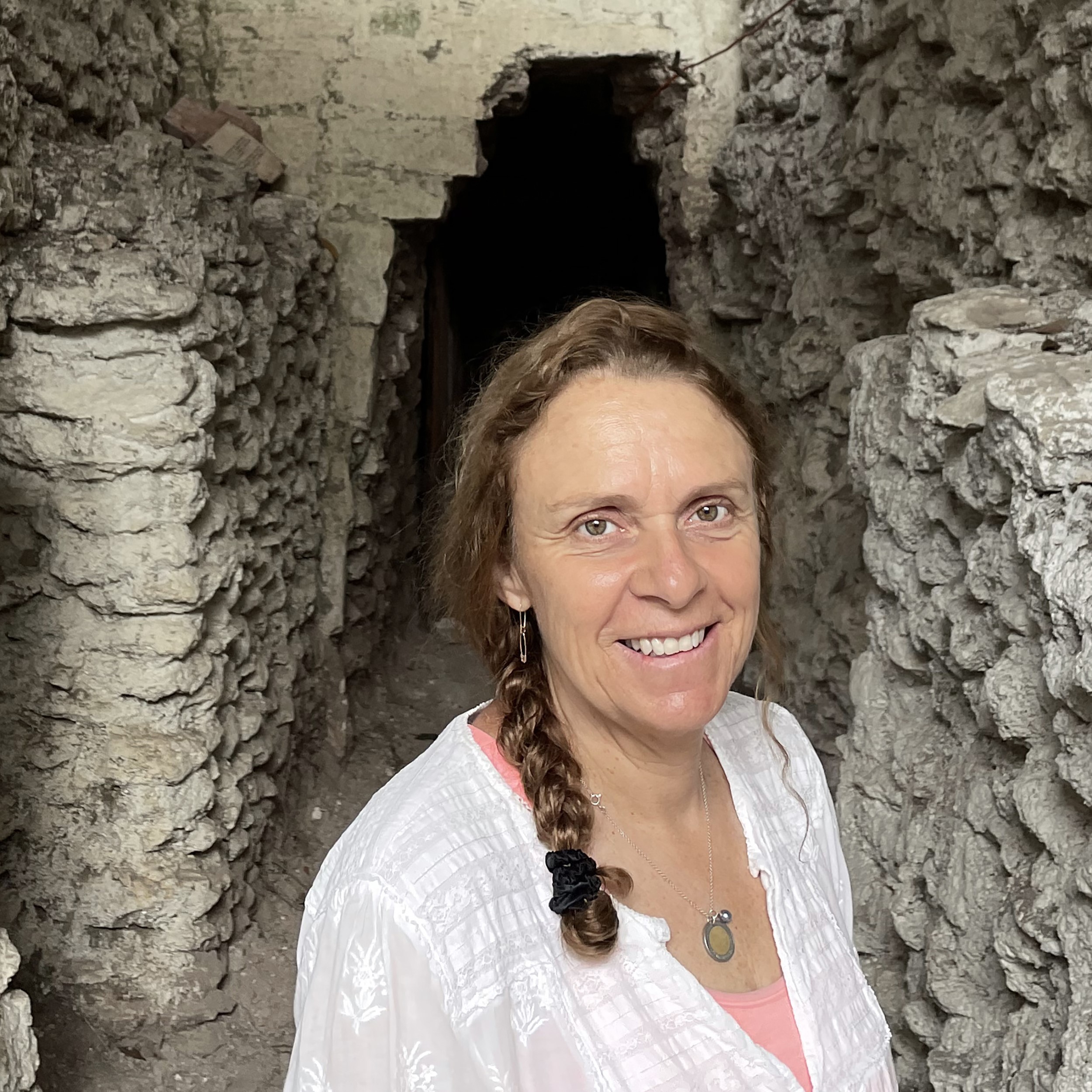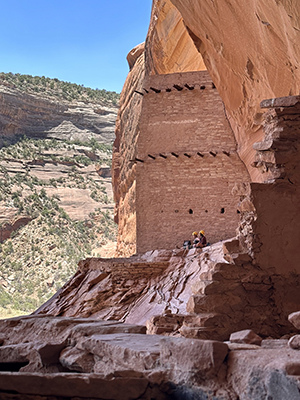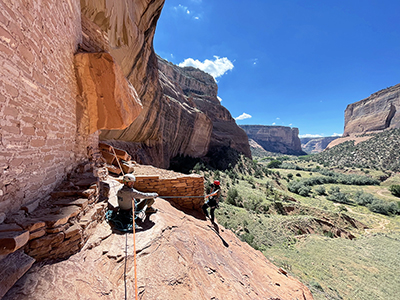UNM Researchers Explore Ancient Architecture at Tsé Yaa Kin
Departmental News
Posted: May 01, 2025 - 09:00am

Tsé Yaa Kin or Mummy Cave, is an alcove village revered by Indigenous people as an ancestral place. TséYaa Kin means “House Under the Rock” and is aptly named.
The 1,700-year-old site is nestled in the center of a 1,000-foot vertical sandstone cliff at Canyon de Chelly National Monument on Navajo tribal trust lands in Arizona. The park is cooperatively managed by the National Park Service and the Navajo Nation.
The National Park Service awarded a grant to UNM’s anthropology department to evaluate the site’s physical condition and help plan for its long-term preservation. The grant is administered through the Colorado Plateau Cooperative Ecosystem Study Unit. Since 2022, teams of researchers from across disciplines, universities and organizations have come together to study and help protect Tsé Yaa Kin.
Angelyn Bass, principal investigator and research assistant professor in the anthropology department at The University of New Mexico, leads the project while collaborating with teams from the University of Vermont, the University of California at Berkeley and Davis, Péten Archaeological Conservation Associates, Archeological and Architectural Consulting Services, The Front Standard Photography and the National Park Service.
The UNM team includes Angelyn Bass, Karen Price, senior collections manager of archaeology at the Maxwell Museum of Anthropology, Mike Spilde, a research scientist at the Institute of Meteoritics and UNM students Autumn Nozie, Bren

Williams and Katharine Williams. Each year, the team offers undergraduate and graduate students internships and educational opportunities. Specifically, Bass and the research teams have opportunities for Indigenous artists this summer and fall semesters. For more information, email Angelyn Bass directly.
Part of the research project focuses on characterizing the earthen building materials, such as mortars and plasters used to create and level the walls, floors and roofs, as well as built-in features like hearths, mealing bins and loom anchors. They are also analyzing the way the building was constructed and changed over time, the stability of the walls and the bedrock on which it is built, and the overall risks of damage from weathering and erosion.
With this knowledge, the team will develop preservation strategies that are responsive to local and environmental threats, balance repair and maintenance with physical integrity and promote co-management by local, descendant, national and global communities.
Ancient builders used materials found in nature, such as stone, wood and mud to build structures and architectural features, as well as crushed minerals and organic materials to color walls and create wall paintings. “By studying these materials, we gain valuable insights into ancient and sophisticated craft practices,” said Bass. “This knowledge helps us understand the material's physical properties, which can then increase our understanding of significance, inform future structural analyses, guide preservation planning, and help shape future management actions.”
“This knowledge helps us understand the material's physical properties, which can then increase our understanding of significance, inform future structural analyses, guide preservation planning, and help shape future management actions.”
– Angelyn Bass
With the natural degradation of the perishable building materials, the team is racing against time and weather to document and preserve the intangible and tangible aspects and remains at Tsé Yaa Kin. These factors, as well as its age and remote cliff setting, make the place very fragile.
Bass and her research teams are using state-of-the-art technology, such as LiDAR. LiDAR, short for Light Detection and Ranging, employs laser light technology to measure distances and create detailed 3D maps of surfaces. The National Park Service provided UNM with the data, which will be used to create drawings and digital twins for use by the structural and geotechnical engineers to analyze, model, and understand the site's structural and physical vulnerabilities.

LiDAR technology has revealed details about many ancient sites, from Maya cities in Central America to Chacoan roads in New Mexico. At Tsé Yaa Kin, the rendered drawings and virtual animations made from the LiDAR data will allow access to the ancient village without setting foot in it, ultimately enabling others to experience the fragile site in a controlled manner. Discussions surrounding access and use of the digital information will continue throughout this project with the Navajo Nation, local communities, federal partners, the affiliated tribes and partnering academic institutions.
In addition to LiDAR scanning, the team uses instrumental analytical technologies to identify the building materials used. These include X-ray diffraction to determine mineralogical content and scanning electron microscopy with energy dispersive spectrometry for high-resolution imaging of the surfaces and to identify each element of the chemical makeup.
“Understanding the behavior of these materials in their architectural roles is essential to evaluating their performance, identifying the areas that are most fragile and vulnerable and defining preservation needs precisely so that unnecessary alterations can be avoided,” said Bass.
This collaborative and multi-disciplinary archaeological-site conservation project, which will be ongoing until 2027, connects scientists, engineers, artists, conservators and specialists from different cultural and academic institutions with UNM students to address the preservation of natural and cultural resources. The documentation and knowledge produced by the Tsé Yaa Kin research teams is a form of preservation and an important means of safeguarding the past for the future.
